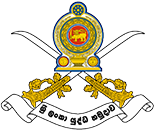 THE arrest on Thursday (April 30) of 15 Tamil Canadian protesters after they crossed a police line in front of the U. S. Consulate in Toronto seemed to mark the climax of a national rally — from Montreal to Ottawa to Toronto — against the humanitarian disaster in Sri Lanka’s northern war zone.
THE arrest on Thursday (April 30) of 15 Tamil Canadian protesters after they crossed a police line in front of the U. S. Consulate in Toronto seemed to mark the climax of a national rally — from Montreal to Ottawa to Toronto — against the humanitarian disaster in Sri Lanka’s northern war zone.
But to organizers, the minor violence was little more than a last gasp of frustration at the rally’s failure to attract any high-level political support. The true moment of crisis came the week before in Ottawa, with the failure of an alleged secret deal with a Conservative party operative that would have seen senior government ministers address the Tamil throngs on Parliament Hill, just as the Sri Lankan army was making a final push against the Liberation Tigers of Tamil Eelam.
Instead, their absence reinforced the impression that these rallies are the futile death throes of the Tamil separatist movement, whose proponents among the diaspora are realizing that the Sri Lankan civil war — unlike the Israeli-Palestinian conflict, or the Troubles in Northern Ireland — seems to be reaching a definitive conclusion.
It is not only this sense of finality and historical catastrophe that makes the politicians’ absence so keenly felt. It is also the increasingly toxic reputation of a flag they regard as a national symbol, and which was frequently indulged by politicians before the LTTE was designated a terrorist group in 2006. Today, the Tiger flag has become political kryptonite.
The prospect of a senior government minister attending the Ottawa rally was unusual, and fraught with controversy. The day before the deal was hatched, the same rally had been openly supporting the LTTE, and hailing the reclusive guerrilla leader Velupillai Prabhakaran as "our leader."
The deal, according to the head of the Canadian Tamil Congress, was for Transport Minister John Baird or Foreign Affairs Minister Lawrence Cannon to appear, provided the militaristic Tiger flag was not flown. Black flags would be used instead, to stage a funeral."
A month before, the appearance of Liberal MP Gurbax Singh Malhi in front of Tiger flags had caused a minor scandal and taught politicians a lesson about the political pitfalls of a terrorist designation, as did the recent appearance of Hamas flags at pro-Palestinian rallies.
But the compromise deal’s last-minute failure — the flags came down, and still no one showed other than NDP leader Jack Layton— stands as a testament to national discomfort over the Tiger flag and its disputed, controversial symbolism. At the rallies, Tiger flags reappeared the next day, and have flown ever since.
"It’s a betrayal," said Sri Ranjan, president of the CTC and a professor of biosystems engineering at the University of Manitoba, who brokered the deal. It has "destroyed my credibility" and weakened his organization’s. If he were to make a similar request again, he said, "they would beat me up."
"It is a lot to ask [to take down a national flag]. People were upset with me," Mr. Ranjan said. "I said let’s give [politicians] a chance to show their colours. And they showed their colours."
The www.army.lk on Monday (4) exclusively reported the arrest (see News Highlights)

